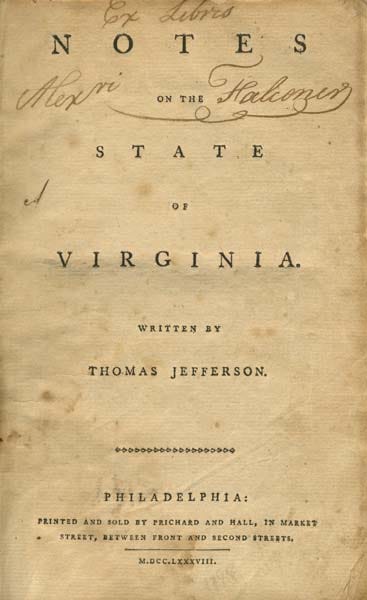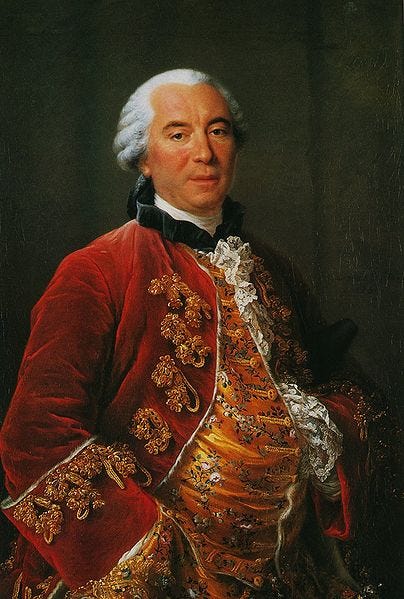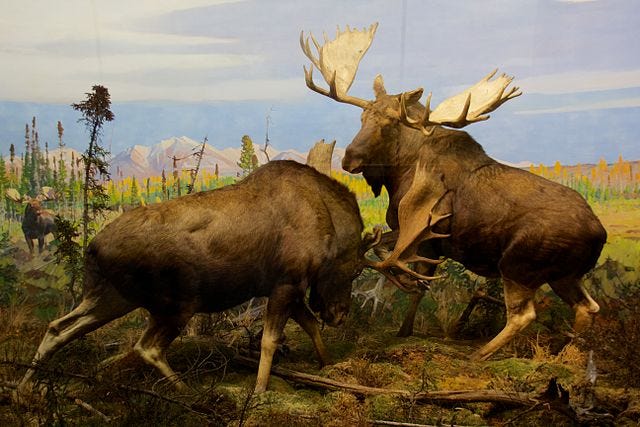How a Moose Became America's Unexpected Hero
Written on
Chapter 1: Jefferson's Fascination
Thomas Jefferson held numerous prestigious roles: the author of the Declaration of Independence, Governor of Virginia, U.S. Ambassador to France, Secretary of State, and the third President of the United States. Beyond these titles, he was also an accomplished paleontologist, philosopher, archaeologist, and inventor. One of his unique passions was a peculiar obsession with measurement.
Jefferson engineered a clock that indicated not just the hour and minute, but the day of the week—a rarity for his time. He meticulously recorded the daily croaking of frogs, monitored his walking speed, and often paused on his strolls to measure the girth of tree trunks or the height of mules. His observations were compiled in a book from 1785 titled Notes on the State of Virginia.

Chapter 1.1: The Content of Notes
In this book, Jefferson discussed various topics, including climate, the geography of rivers and mountains, and even social etiquette. However, it also contained his troubling and hypocritical perspectives on race. While he expressed disdain for "race-mixing," he fathered children of mixed race with Sally Hemings, his wife's half-sister and one of his enslaved individuals. Jefferson's motivations for writing Notes extended beyond personal obsessions; he aimed to counter the claims of his rival, Georges Louis Leclerc, Comte de Buffon.

Section 1.1.1: Buffon's Claims
Buffon, too, had a penchant for measurement, focusing on various animals and even making controversial claims about race. He contended that America's fauna were inferior, asserting that the largest animals here were small in comparison to those in Europe and Africa. Buffon’s theories, particularly his ‘Theory of Degeneracy,’ suggested that American species were regressing due to the environment, which he described as overly humid and swampy.
His assertions extended beyond animals to the people of America, whom he deemed weak. Buffon's influential writings shaped perceptions in Europe, leading to a widespread belief that America produced inferior beings. His work, Histoire Naturelle, became a bestseller, further entrenching negative stereotypes.
Chapter 2: Jefferson’s Response
When Jefferson encountered Buffon's claims, he was outraged. He realized that such negative perceptions could hinder America's growth, limiting trade and immigration. To combat this, he invited Buffon to dinner, intending to debunk his theories with scientific evidence.
Jefferson cited various measurements, illustrating that American animals were, in fact, larger and stronger than their European counterparts. He highlighted that the American black bear weighed 412 pounds, significantly outmatching the European bear at 153 pounds. He also noted that the American beaver was 45 pounds compared to the European beaver’s 18 pounds.
To further bolster his argument, Jefferson referenced the bones of a Mastodon discovered in Kentucky, which he claimed were larger than those of the Asian elephant. In a bid to demonstrate the strength of American wildlife, Jefferson decided to send Buffon a moose, the Alces alces.

The video titled "How Thomas Jefferson Saved America With a Dead Moose" delves into this fascinating tale and how Jefferson's moose ended up changing perceptions of America in Europe.
Section 2.1: The Quest for a Moose
Jefferson faced a challenge: he needed a magnificent moose to send. He enlisted friends in Vermont to procure an impressive specimen. Unfortunately, the result was less than ideal; the moose they retrieved was mishandled and arrived in a dismal state. However, Jefferson remained hopeful and sent the damaged moose to Buffon, believing it would make a significant impact.
Despite delays in shipping, which took over a year, Jefferson was thrilled when the moose finally reached Paris. He later learned that it had swayed Buffon's opinion, leading to plans for a revised edition of Histoire Naturelle. Jefferson celebrated this victory with a grand feast, highlighting America's triumph through an unlikely hero—the moose.
In conclusion, while the bald eagle is often celebrated, it was the humble moose that significantly contributed to reshaping America's image abroad. This story serves as a reminder of the importance of substance over mere appearances.